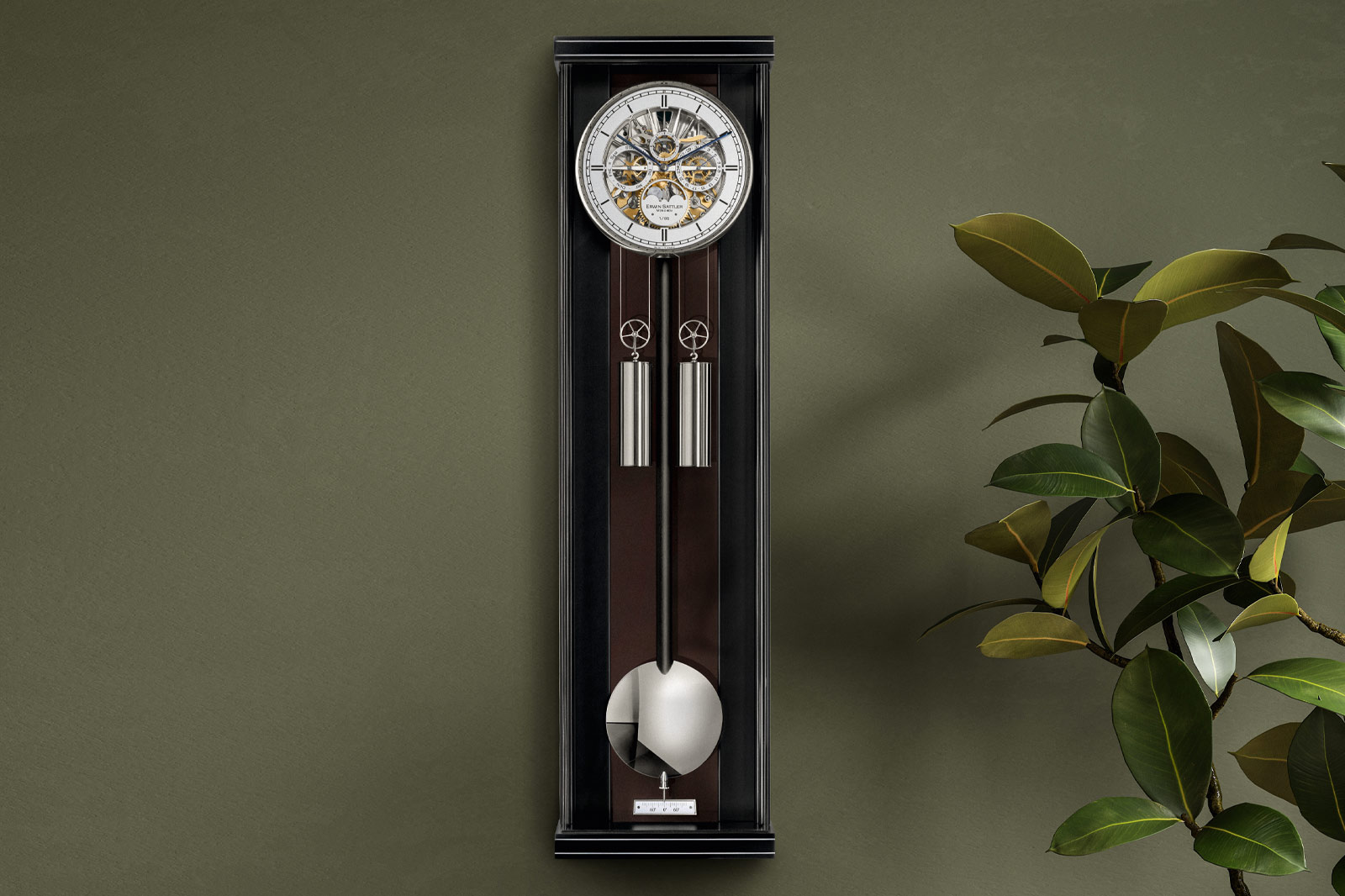
While we often dwell on the intricacies and minutiae of horology in its smallest, most minimal form in watchmaking, it’s important to remember that horology isn’t a science limited to the wrist. Pendulum clocks take many of the principles of watchmaking but write them large to create centrepiece objects that are as much sculpture as they are timekeeping device. German brand Erwin Sattler certainly know this to be true with the 12m clock housed in their Munich manufacture. Today though we’re focussing on the new Erwin Sattler Aperia III, which is designed to be the centrepiece for your living room rather than an entire building.
Aperia III is presented in the Opus case, a black varnish design with hand-polished finishing that measures 96cm x 25.5cm x 11cm. In the top portion of the case is the clock face itself, which we’ll delve into in greater depth in just a moment, and below that are the pullies and pendulum that serve as the clock’s drive and oscillator. Then in the base of the case is housed the crank for winding. We traditionally think of pendulum clocks in the context of grandfather clocks with baroque or gothic designs and yet here we see that the Aperia III is sleek and modern like many German watchmakers I could name.
Narrowing in on the clockface itself, it’s a multi-layered skeleton display with four subdials. In terms of functions you have date at 3 o’clock, moonphase at 6, days of the week at 9 o’clock and small seconds at 12. On a quasi-philosophical note I wonder if small seconds is the correct term considering that it’s larger than most wristwatches. Then completing the display are the central hour and minute hands corresponding to the peripheral hour and minute scales that frame the piece.
The style is a fusion of classical and modern. The railway minute track and bar indexes feel strongly vintage as do the classical blued hands, but that’s combined with the skeletonised portions that give an industrial, technical appearance. Perhaps the clearest expression of this duality is the moonphase, which features a beautiful and delicate moon over a void of wheels and mechanisms. Just as we set out at the start of this article, it’s reaching out towards horology as artistry and horology as science at the same time.
Talking about the mechanics of the Aperia III, the movement controlling it all is the Sattler Calibre 1575-SK. As you’d gather from the presence of a crank, it’s manual wind, but you don’t have to worry about it constantly running out of power as it has a 30-day power reserve. The movement’s backplate, which is visible through the skeletonised display is made from guilloche rhodium and looks great.
Erwin Sattler’s Aperia III is a limited edition of 65 pieces. In a horological world that’s increasingly obsessed with the latest hype trend, Erwin Sattler are committed to creating horological expressions that will always be stylish thanks to their fusion of modern and vintage elements and mechanical excellence.
Price & Specs:
Model: Erwin Sattler Aperia III
Case/dial: 96cm height x 25.5cm width x 11cm depth, opus-case with black varnish hand polished cassette in black-brown, rim and base with metal inlays, door with magnetic closure, five-part adonised skeletonised dial with applied and polished indexes and hand painted moon disc
Movement: Sattler calibre 1575-SK, calendar and strike train
Power reserve: 30 days
Functions: Hours, minutes, date, day of the week, moon phase, half hour striking mechanism
Price/availability: $24,800, limited to 65 pieces
More details at Erwin Sattler.
Oracle Time